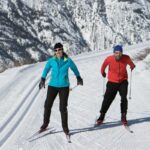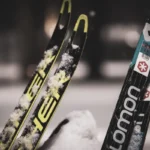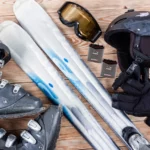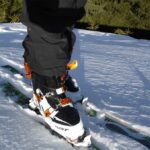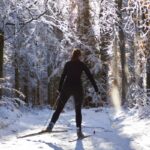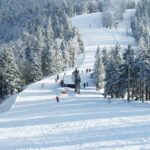Backcountry skiing, also known as off-piste or alpine touring, involves skiing outside the managed and patrolled boundaries of a ski resort. Unlike traditional skiing, backcountry skiing often requires ascending mountains on foot or with skins attached to skis before descending on unmarked and untouched snow.
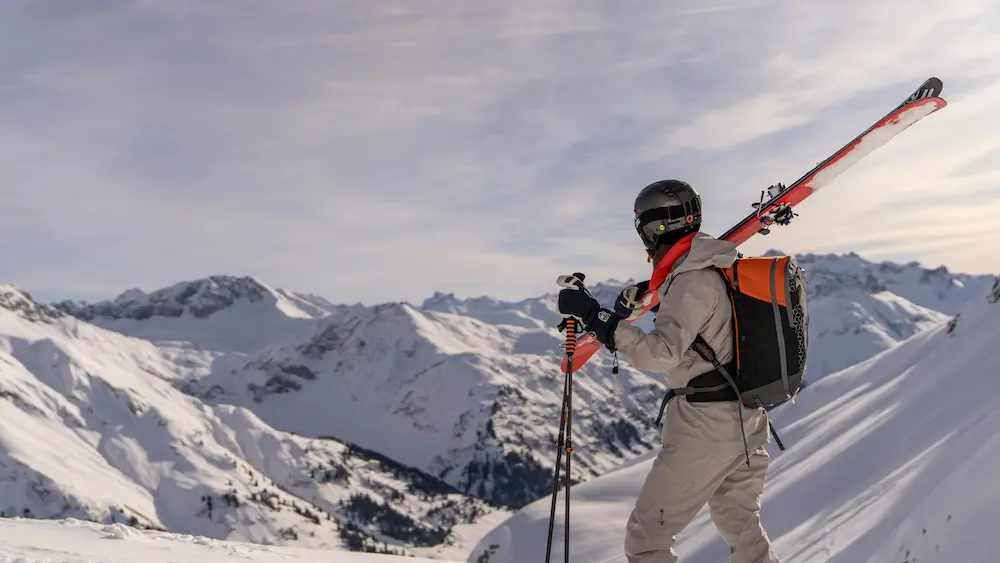
What is Backcountry Skiing?
Backcountry skiing refers to skiing in natural, unmarked, and often remote terrain. It combines elements of mountaineering, cross-country skiing, and alpine skiing. Unlike resort skiing, backcountry skiing does not use ski lifts or marked trails. Skiers ascend using specialized equipment, such as climbing skins and alpine touring bindings.
Essential Gear for Backcountry Skiing
Skis and Bindings:
- Alpine Touring Skis: These skis are lighter than traditional skis, making them ideal for both climbing and descending. Popular models include the Dynafit Beast 98 and Black Crows Camox Freebird.
- Bindings: Look for bindings that allow free-heel movement during ascent and can be locked down for descents, such as the Marker Kingpin or Dynafit Radical.
Climbing Skins:
- Climbing Skins: Attach these to the base of your skis for grip during uphill travel. Consider the Black Diamond Ascension Nylon skins for durability and performance.
Avalanche Safety Equipment:
- Beacon: A beacon, such as the BCA Tracker 3, transmits your location in case of an avalanche.
- Shovel: An essential tool for digging out in case of burial. The Voile TelePro T6 shovel is a reliable choice.
- Probe: A probe helps locate buried individuals under the snow. The Black Diamond Quickdraw probe is a top pick.
Clothing:
- Layers: Use base layers, mid-layers, and outer layers designed for moisture management and warmth. Brands like Patagonia and Arc’teryx offer excellent options.
- Shell Jacket and Pants: Waterproof and breathable options, such as the Gore-Tex jackets and pants, protect against the elements.
Other Essentials:
- Backpack: Choose a backpack with space for gear and an avalanche airbag, like the Mammut Pro Protection Airbag.
- Helmet: For protection against falls and collisions, consider the Smith Vantage helmet.
Safety Considerations in Backcountry Skiing
Avalanche Awareness:
- Avalanche Courses: Taking courses, such as those offered by the American Institute for Avalanche Research and Education (AIARE), is crucial.
- Daily Avalanche Forecasts: Always check local avalanche forecasts from sources like Avalanche.org before heading out.
Weather Conditions:
- Weather Monitoring: Regularly check weather conditions using apps like Mountain Weather. Sudden changes can be dangerous.
- Understanding Snowpack: Learn how to evaluate snow stability by attending workshops or using resources like Snow Sense by Jill Fredston and Doug Fesler.
Group Dynamics:
- Group Size: Smaller groups move more efficiently, but ensure you have at least one partner for safety. The buddy system is vital in the backcountry.
- Communication: Use radios like the BCA Link or agreed signals for clear communication in case of emergencies.
Popular Backcountry Skiing Destinations
North America:
- Wasatch Range, Utah: Known for its deep powder and accessible terrain, with spots like Little Cottonwood Canyon being favorites.
- Rocky Mountains, Colorado: Offers a variety of terrain, from gentle slopes to challenging descents. Berthoud Pass and Loveland Pass are popular areas.
Europe:
- Chamonix, France: Famous for its high alpine terrain and challenging routes. Vallée Blanche is a must-visit for advanced skiers.
- Dolomites, Italy: Provides a mix of dramatic scenery and varied routes, with areas like Sella Ronda offering both beauty and challenge.
Asia:
- Hokkaido, Japan: Renowned for its light, dry powder and tree skiing. Niseko is a top destination for powder enthusiasts.
- Kashmir, India: Offers unique cultural experiences along with high-altitude skiing in areas like Gulmarg.
Conclusion
Backcountry skiing offers a unique blend of adventure, solitude, and challenge. Proper preparation with the right equipment, training, and knowledge is crucial. Whether you seek untouched powder or a deep connection with nature, backcountry skiing provides an unparalleled experience.
For more detailed guides on backcountry gear and safety, explore resources from Backcountry Magazine or the American Avalanche Association.
- Types of Skiing Terrains: A Comprehensive Guide for Every Skier - December 6, 2024
- Skiing Nutrition: Essential Nutritional Advice and Meal Planning for Skiers - August 15, 2024
- Backcountry Skiing Explained: Essential Tips and Gear - August 8, 2024

